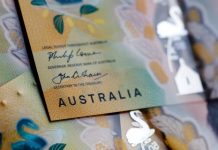Australia’s economy grew by a tepid 0.2% in the quarter. Consumer spending remains soft, up 0.2%, with high inflation and higher interest rates leading to a fall in real household disposable income, down 0.3%. Domestic demand rose 0.6%, led by business investment and public demand.
The Australian economy expanded by a tepid 0.2% in the March quarter.
That was broadly as anticipated, Westpac 0.3% and market median 0.3%, range (0.1% to 0.6%).
Annual growth is 2.3%. The level of activity is 7.4% above that prior to the pandemic, at the end of 2019.
Key surprise: The key downside surprise, the statistical discrepancy subtracted 0.1ppt from activity in the period – i.e. the income and production estimates of GDP at 0.2% were a fraction softer than the expenditure measure, which grew by 0.3%, meeting expectations.
Total inventories were also a fraction softer, printing flat, with a slightly larger drag from farm than allowed for (-0.1ppt vs a forecast -0.05ppt). While domestic demand was a little stronger, at +0.6% vs an expected +0.4%.
Consumer spending grew by a sluggish 0.2% in the quarter, little changed from the 0.3% increase the period prior. That represents a slight upside surprise from our latest expectation for a flat result.
The detail shows the gain centred on services with other components recording declines.
Around incomes, the picture was mixed.
Nominal wage incomes grew by a robust 2.4%; nominal gross household income increased by 1.7%; nominal gross disposable income (after interest payments and taxes etc) expanded by 0.8% (a rebound from the -0.7% decline the quarter prior); and real gross disposable income is weak, declining by 0.3%, but again that was a marked improvement on a -2.2% for the December quarter. Consumer prices increased by 1.2%, a moderation on 1.5% for the previous quarter.
The household saving ratio continues to trend lower, declining from 7.1% in the September quarter to 4.4% in December and then 3.7% in March – with the past two outcomes below the “equilibrium”, judged to be around 6%. The period of “excess savings”, which was a feature during the pandemic, has ended. Households are now drawing down on the savings buffer to support spending.
Hours worked: The National Accounts estimate that hours worked expanded by 0.6%qtr and 7.1%yr. The Labour Force survey estimated that hours work declined by -0.2% in the March quarter.
Expenditure detail:
Domestic demand grew by 0.6% in the March quarter, representing an upside surprise and a rebound from the broadly flat outcome for the December quarter (a +0.1%, revised up from flat).
Net exports subtracted a modest 0.2% from activity, with strong imports, +3.2%, outpacing a 1.5% lift in exports (centred on services).
Total inventories were neutral in the period, with a 0.3ppt contribution from private non-farm offset by farm and public authorities.
Home building activity declined by -1.2%, with falls in new dwelling construction and renovations (with the latter weaker than the quarterly partial).
The real estate sector – in the form of Ownership Transfer Costs (turnover in the property sector) – declined by a further 5%, to be 22% lower over the year as rapid interest rate rises bite.
Business investment increased by solid 2.9%, including a 4.9% increase in equipment spending and a 3.1% rise in infrastructure (with the growing pipeline pointing to some further upside in this segment).
Public demand has been cresting at a high level as the spike in covid related spending unwinds. In the March quarter, on a strong showing from investment (centred on construction, which has further upside) +4%, total public demand grew by 0.8%.














